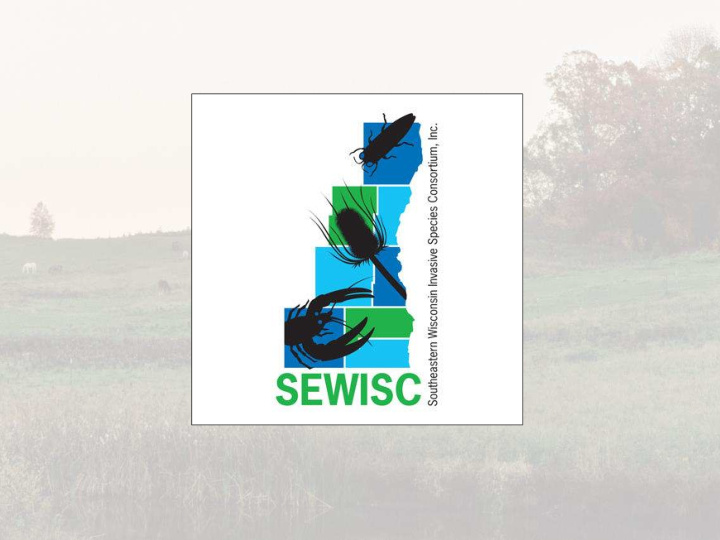



A Local Community Effort 181 volunteers involved More than 2,500 hours donated Volunteers drove, hiked and biked nearly 26,000 miles Volunteer surveyors chose areas near home All 8 county governments, UW-M and SEWRPC cooperating with creating survey maps and GIS layer
A Regional Effort
Your citizens are involved Our volunteers have helped identify the locations of four invasive species on the ROW of public roads Rights-of-way tend to be ideal habitat for invasive plants Once established, invasive species can cause a variety of problems
Teasel
Teasel Dipsacus fullonum Dispsacus pilosus This species is Restricted
Teasel
Japanese Knotweed
Japanese Knotweed
Japanese Knotweed Fallopia japonica This species is Restricted
Common Reed Grass
Common Reed Grass Phragmites australis This species is Restricted
Common Reed Grass
Wild Parsnip
Wild Parsnip Pastinaca sativa This species is Restricted
Wild Parsnip
Wisconsin NR 40 The invasive species rule (Wis. Adm. Code ch. NR 40) makes it illegal to possess, transport, transfer, or introduce certain invasive species in Wisconsin without a permit. Everyone is responsible to comply with these regulations.
GIS
Washington County
Town of Kewaskum 26 Survey Points recorded by residents Wild parsnip: 22 (heading from the west at a fast pace) Giant reed grass: 3 Teasel: 1
They can be managed Requires knowing something about the plants: Habitat – sun vs. shade, wet vs. dry Life form – herb, grass, vine, shrub, tree Life cycle – annual, biennial, perennial Vulnerable points – seedling, rosette, flowering, adult And how they reproduce and spread: Annuals and Biennials - prevent seed formation Simple Perennials - prevent seed formation and kill plants (if possible) Creeping Perennials - prevent seed formation and kill roots (if possible) Shrubs, trees and vines - minimize seed formation, and remove tops and kill roots
Smart Mowing Practices
Basic Plan to Stop the Spread of Invasives on Roadways • Adjust ROW mowing to: • prevent spreading seed ; • prevent seed set ; • Monitor roadways to: • identify new individual plants and small patches of invasives ; • Eliminate small patches of invasives first ; then treat larger patches; • Sustain the program on a continuing basis.
We are here to help SEWISC is a resource for your municipality to use in your effort to control your invasive species. We can provide information and support your efforts to make your public lands healthy. Visit: http://sewisc.org/invasives/roadside-inventory-and-management
Recommend
More recommend